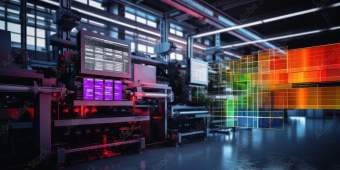Understanding supply chain vulnerabilities in 2024
You don’t have to be a manufacturing insider to sense the current state of play in supply chain disruptions. Many of them have made global headlines as they pose major manufacturing constraints in getting quality products into the hands of business customers and consumers. They cover a wide range of areas that include:
Geopolitical tensions. The sources range from the ongoing U.S.-China trade war to Russia’s invasion of Ukraine. Missile attacks related to the Israel-Hamas war have imperiled the high volume of commercial shipping in the Suez Canal, forcing many vessels to take the safer but much longer route around Africa. By some estates, traffic has plunged by 66 percent.
Natural disasters and climate change. The world’s other crucial shipping artery, the Panama Canal, is under threat from drought. And today, a Category 4 or 5 hurricane is twice as likely to occur as in the 1970s.
Pandemic-related closures and restrictions. The ripple effects of COVID-19 are still being felt in the supply chain, which weathered unprecedented manufacturing challenges. Pandemic lockdowns in China and port congestion in the US, for example, created bottlenecks that strained supply chains among the world’s two largest trading nations, which together account for nearly $6 trillion in exports. As of October 2023, shortages of electrical, electronic, and semiconductor parts had persisted for more than 30 months, according to Deloitte.
A 2023 study by Ernst & Young LLP found that enterprises in the wake of the pandemic plan to “shake up their supply chain strategies” to become more resilient, sustainable, and collaborative with customers, suppliers, and other stakeholders. This is where innovative manufacturing solutions come in.
Technological innovations in manufacturing
In an age of exploding AI, trade technology does not exist as a static or even a slow-moving force. The advance of innovative manufacturing solutions has led to breakthroughs along many fronts. These include:
Automation and robotics
At Tesla's Gigafactory 1 in Storey County, Nevada, automated lines with robotic arms stack, weld, and assemble battery components; automated systems also handle supply chain logistics to ensure raw materials are efficiently transported to production lines. Human error is reduced and efficiency in the manufacturing process increased, as robotics and automated systems work around the clock without tiring or making errors.
Internet of Things (IoT) and smart factories
CNC machining (the acronym stands for computer numerical control) is known for its accuracy and productivity in tooling metal and plastic components. It also benefits greatly from its connection to the internet of things. This allows for flawless tolerance in terms of straightness, flatness, circularity, and much more.
Shops can also cut downtime and monitor machine performance in real time by connecting CNC machines to the internet. This is because real-time data collection facilitates predictive maintenance, which leverages historical data, AI, machine learning and other advanced analytics capabilities to predict and perform custom maintenance before equipment fails or malfunctions.
Per Deloitte’s 2024 Manufacturing Industry Outlook, 76 percent of manufacturing organizations aim to gain more visibility into their supply chain by adopting digital tools. Smart factories leverage data analytics and intelligent automation to reconfigure production lines, adjust process parameters, and optimize workflow.
3D printing
This technology, first developed in the 1980s, has advanced to the point where the notes that it could produce a “potentially endless range of products” that include machinery parts, shoes, hearing aids and prosthetics. It can even create an entire house in less than 24 hours. Also known as additive manufacturing, 3D printing provides a cost-effective alternative to using steel or aluminum to produce plastic injection molding.
Strategic innovations
To get a holistic picture of innovative manufacturing solutions, it’s important to recognize not just the advancements in technology but strategy as well. The pandemic, in fact, produced a tectonic shift in how manufacturers approached their supply chain strategy.
Reshoring and nearshoring
Reshoring returns production to the region where the products will be sold, while nearshoring moves it to an international location closer to the point of sale. This can lead to reduced lead times and transportation costs, as well as support regional or state-level economic development efforts. Florida in particular stands to benefit due to its business tax structure, streamlined regulatory environment, and abundant labor supply.
In an effort to create a more resilient post-pandemic supply chain, Ford has announced multi-billion-dollar reshoring investments in its American plants, focusing on modernization and expansion with an emphasis on electric vehicles.
With nearshoring, Mexico (America’s top trading partner) is home to successful operations for Boeing and Whirlpool. Pandemic-related sourcing risks moved Parkdale Mills to invest $150 million to build a new spinning facility in Choloma, Honduras, which will shift one million pounds of yarn a week out of supply chains in Asia that use contract manufacturers.
Supplier diversification
By diversifying suppliers, manufacturers can enhance their resilience to disruptions and keep production lines running. Early in the pandemic, companies learned to avoid over-reliance on single-source suppliers, especially with China’s lockdown. Today, risks persist as a result of global conflict in the Middle East and Russia’s war with Ukraine. Using suppliers in Mexico, Canada, Vietnam, and India has provided a more stable supplier base.
In a supplier diversification scenario, a company may use several different primary suppliers for a commodity, with three backups. This could also include a "multi-shoring" strategy where suppliers and their backups are located in different geographies.
Inventory management innovations
On the inventory management spectrum, two philosophies sit at opposing ends: just-in-time (JIT) and just-in-case (JIC). JIT aims for lean operations by minimizing excess inventory, while JIC makes stockpiling a priority, thus offering a safety net for unforeseen supply chain disruptions.
The generations-old JIT system revealed its vulnerabilities during the early pandemic as customers waited longer than ever for products due to raw material shortages and supply chain chaos. And with JIC, companies run the risk of tying up funds in excess inventory that may never get used. Enter predictive analytics, which forecasts future inventory flow using historical data, statistical modeling, data mining, and machine learning.



